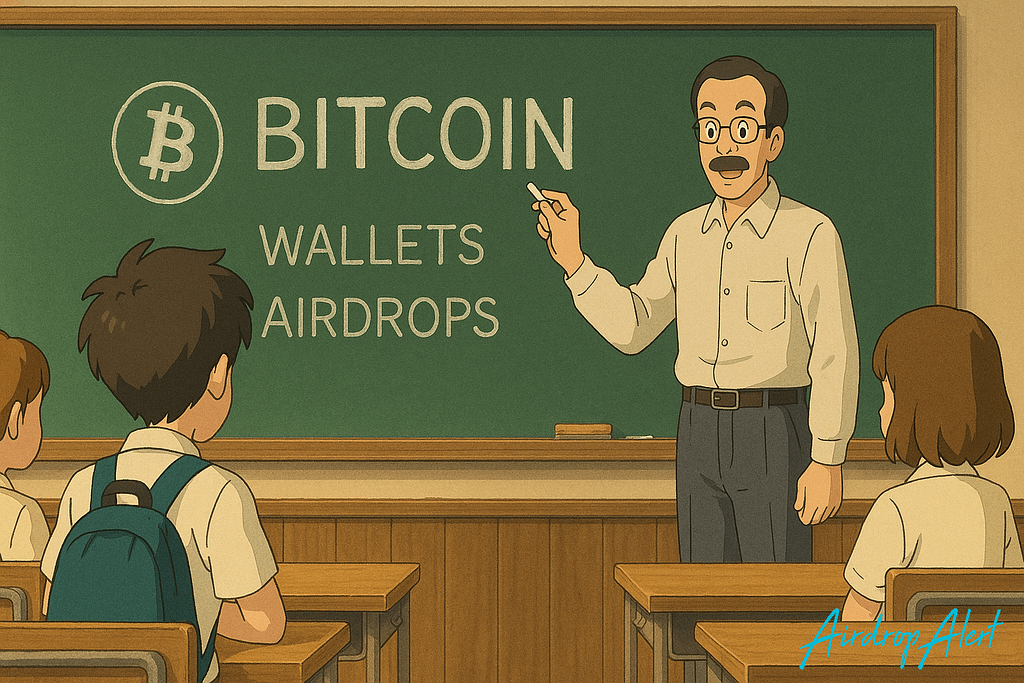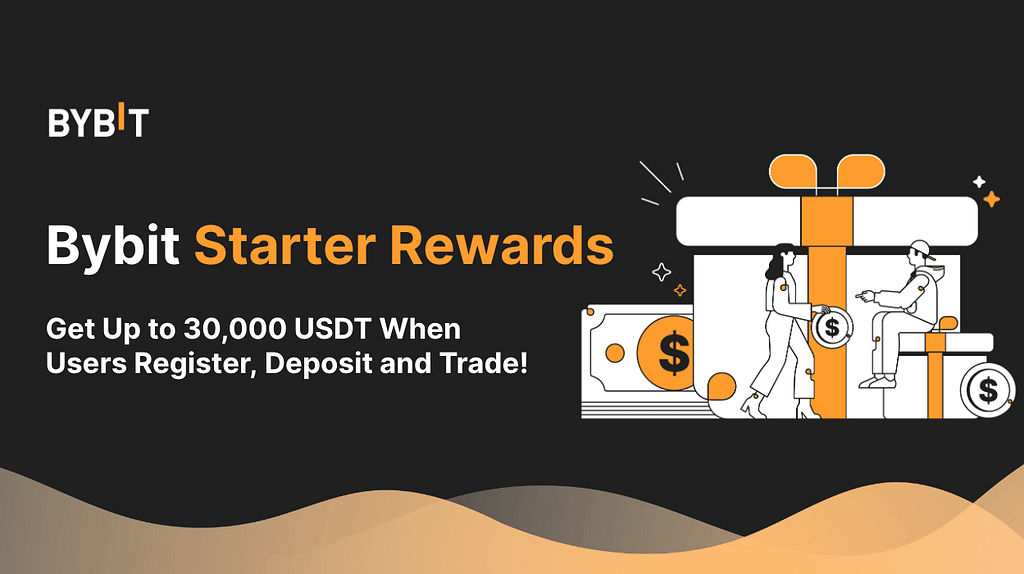Welcome to Crypto: The Class of 2013 Says Hi
We’ve been in crypto since 2013 — the OG class. I bought Bitcoin at $44. Ethereum at $7. And we farmed the first airdrops and wrote guides for millions on how to claim them.
After doing the media rounds for the Trump Dinner, we noticed something surprising. Many people still don’t own any crypto. That shocked us a bit. To us, it’s daily life. But to most, it’s still a mystery. So today, we’re paying it forward. What if we had to start crypto today? How would we begin?
It’s Much Easier to Start Crypto Today
I feel old saying this, but getting into crypto a decade ago was painful. If you wanted Bitcoin, you had to run a node just to make a wallet. Syncing took days. Buying $BTC at $20? That required joining a waiting list on an exchange with weeks of delay.
Now? You can buy crypto with Apple Pay. It’s wild.
Thousands of easy options. Cold wallets, browser wallets, phone apps — it’s all user-friendly now. Even buying is simple. CEXs and DEXs are everywhere. Fiat onramps are fast and smooth.
But before you jump in, there’s one important thing to cover first.
Step 1: Protect Yourself – Basic Crypto Security Tips
Crypto is easier, but the risks are still real. Let’s start with some basic safety rules.
- Never share your seed phrase or private keys
- Don’t take photos of your seed phrase
- Avoid clicking on random links from social media, emails, or texts
- Enable two-factor authentication on all your accounts
- Use password managers — or at least avoid duplicate passwords
- Create a burner email just for crypto
- Don’t download random files or extensions from sketchy sources
- Keep your software and wallet apps up to date

Step 2: Protect Yourself Offline Too (Yes, IRL Matters)
Crypto crimes and kidnappings do exist. Don’t advertise your portfolio. Stay low-key.
- Don’t store your seed phrase in just one location
- Use multiple wallets and exchanges to split your funds
- Don’t flex your crypto wealth online
- Avoid sharing wallet screenshots
- If you make gains, resist telling the whole bar
- Back up your wallet info offline and securely
Step 3: Get Started Without Spending – Farm Airdrops
Obviously, we’re Airdrop Alert — so airdrops come first.
Airdrop farming is a great low-risk entry point. Some projects don’t even require you to spend any money. You can earn your first crypto instead of buying it.
Here’s a sentence for everyone who owns zero crypto:
“You don’t need to buy crypto. You can earn it.”
We’ve got filters on our site to help you browse. Plus, check out our full guide here:
How to Start Crypto with $0
Some categories to watch:
- DePIN: Share bandwidth or location data to earn
- Gaming: Play and earn tokens with skill or time
- Testnets: Try new platforms and get rewarded
- Social airdrops: Become a content creator or engagement farmer
Want to see what social farming looks like? We recently wrote a full guide on that too:
Kaito Farms to Maximize Your Airdrop

Step 4: Choose the Right Wallet for You
Ask yourself these questions:
- Want to buy and hold? → Get a cold wallet (like Ledger)
- Want to farm and explore? → Use a browser extension wallet (like Rabby or Phantom)
- Want to trade from your phone? → Try a mobile app wallet (like Trust Wallet)
Each goal has a matching wallet. The best setup depends on what you plan to do. Ideally, use different wallets for different purposes.
Step 5: Buy Crypto for the First Time
We love decentralization, but let’s be real — the easiest way to buy is on a centralized exchange.
Maybe you already use Robinhood. If so, you’re a few clicks away from your first buy. If not, open a new account. We’ve listed a few good options here:
List of 6 Best Crypto Exchanges
We usually stick to Bybit — it’s smooth and user-friendly. But Binance is the big favorite for many.
Step 6: Dollar-Cost Averaging (DCA) Is Your Best Friend
Let’s be honest. Trying to time the perfect entry in crypto is like trying to guess when your toddler will nap — unpredictable and often frustrating. That’s where dollar-cost averaging, or DCA, comes in.
DCA means buying small amounts of crypto on a regular basis, no matter what the price is. It could be once a week, once a month, or whenever you get paid. Over time, you average out your purchase price. No stress. No FOMO. No panic selling at the bottom.
For beginners, this strategy is great. It helps you avoid putting in all your money at a local top. You also learn about the market while slowly building your portfolio. Many long-term investors swear by DCA, especially for solid coins like Bitcoin and Ethereum.
It’s also great for people with jobs who don’t want to be glued to charts. Set it, forget it, and check back in a year. You’ll probably be glad you did.
Start crypto today by setting up a small DCA plan. Even $10 a week adds up over time.

Step 7: Stick to the Basics — BTC and ETH First
It’s tempting to chase the next hot token that your friend’s cousin heard about on TikTok. But if it’s your first day in crypto, you should stick with the foundations.
Bitcoin (BTC) is the original. Ethereum (ETH) powers smart contracts and most of the blockchain world. These are not only the largest cryptocurrencies by market cap, but they also have the most infrastructure and developer activity. That means more liquidity, better security, and more tools available to interact with them.
If you buy Bitcoin or Ethereum, you can easily use them in DeFi apps, trade them on any exchange, or just hold them long-term. You’ll also understand how crypto works as a system — because most of the ecosystem is still built around these two.
It’s not that meme coins or newer altcoins are bad — we love a good moonshot. But don’t start there. First build a base. Once you understand how wallets, gas fees, and swaps work, then you can explore other coins.
I’ve heard “Bitcoin is too expensive, since it was $250”. It’s never too late to get started. If you want to start crypto today, don’t start with the casino. Start with the foundation.
Follow a curated list on X, and no shillers.
Step 8: Start Small — Test the Waters
Crypto is exciting. You’ll see people posting screenshots of turning $50 into $5,000. But those stories are rare, and the losses usually aren’t shared.
Start small. Seriously. If you’re new, it’s better to test with small amounts. Try sending a few dollars from one wallet to another. Try swapping tokens on a DEX. Try bridging from one blockchain to another. Learn the ropes with money that you can afford to lose.
Why? Because mistakes happen. People lose funds by sending to the wrong address, clicking the wrong button, or forgetting gas fees. It’s part of the learning process.
By starting with small amounts, those lessons won’t hurt so much. It’s like learning to drive in an empty parking lot before hitting the freeway.
Also, crypto is volatile. Prices go up fast, but they can also drop 40% in a day. That’s normal here. Don’t risk rent money, don’t touch your savings, and don’t bet your emergency fund.
Start crypto today — just not with your life savings. You’ll thank yourself later.
Step 9: Learn Before You Trade — Education > Emotion
Trading looks easy on social media. Zoom in on a green candle, throw in a few lines, shout “breakout,” and pretend you saw it coming.
In reality, trading takes time to master. It involves psychology, discipline, strategy, and constant learning. If you start throwing your whole portfolio into leverage trades on day one, chances are high you’ll blow up your account.
Instead, spend your first few weeks learning. Watch videos about technical analysis. Read Twitter threads from actual traders (not influencers who only post wins). Practice with small amounts and set stop losses. We post semi-daily trading content where we discuss the majors like BTC, ETH, SOL, but also other alt coins.
And remember — always protect your capital. A small loss is fine. A total wipeout? That takes the fun out of it.
If you’re interested in trading, you can start with spot trades — simple buys and sells without leverage. Or use demo accounts to simulate trades before risking real money. There’s no shame in taking it slow. Crypto isn’t going anywhere.
If you’re serious about trading one day, you’ll need months of study. But that journey can be fun too. You just need to respect the game.
Start crypto today by learning the basics, not chasing magic triangles.
Study our series of trading guides

Step 10: Understand Taxes — Uncle Sam Wants In
No one likes taxes. But if you’re making money in crypto, chances are your government wants a piece of it.
Many countries now have clear crypto tax laws. In most cases, selling crypto, swapping one coin for another, or even receiving airdrops can be taxable events. That means you’ll need to track what you buy, when you sell, and at what price.
If you’re just starting out, don’t stress too much — but don’t ignore it either. Use tools like CoinTracker or Koinly to automatically track your trades and gains. They plug into your wallet or exchange accounts and make tax season way less painful.
Also keep in mind that even staking or yield farming may be taxable in your country. That’s why it helps to have a separate wallet just for airdrop farming or passive income strategies.
Check with a local tax advisor or look up crypto rules in your region. Trust us — dealing with it now is much better than getting a surprise bill later. You can also check this guide we wrote a couple of months ago.
If you start crypto today, stay compliant from day one. Future-you will appreciate it.
Step 11: Avoid FOMO — Don’t Buy the Hype
This is a big one. FOMO (fear of missing out) is the most dangerous thing in crypto.
Every week, there’s a new narrative, a new token, or a new protocol that’s “changing the game.” Some of them will go 10x. Most of them will crash.
It’s tempting to chase every pump. But buying without understanding what you’re getting into is a fast path to losses. You’ll buy the top, panic when it drops, and sell for a loss. Then it will go back up — without you.
It happens to everyone at least once. The goal is to not let it happen over and over again.
Instead, zoom out. Stick to your strategy. Watch the market, read project docs, and ask questions before jumping in. A good rule of thumb: if it feels like you’re too late, you probably are.
Let others FOMO into top buys. You stay calm, do your research, and act with logic.
Start crypto today with patience, not panic.
Check our regular crypto news to stay in tune with the market.
Final Words
Maybe I missed a few things. Maybe I’ll update this post with even more tips over time.
But overall, this guide should give you a pretty smooth entry into crypto. It’s the kind of article I’d send to my mom if she asked, “How do I start crypto today?”
The world of crypto is massive. It can be confusing. But it’s also full of opportunities, new ideas, and amazing people. Take your time, stay safe, and enjoy the ride.
And remember — you don’t need to know everything to begin. You just need to begin.
Welcome to crypto.
If you enjoyed this blog, check out our recent guide on how to buy gold with crypto.
As always, don’t forget to claim your bonus below on Bybit. See you next time!



